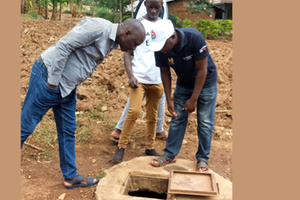Alarm as cholera kills five in Nairobi, Kisumu and Migori

Kenya has so far recorded 69 cases cholera in the latest outbreak.
Cholera has killed five people as the country scrambles to respond to the outbreak that has affected Nairobi, Kisumu and Migori counties.
According to a statement by the Ministry of Health (MOH), the five are among 69 who have so far tested positive for the disease.
Migori County has recorded 43 cases, with the first recorded on February 5 from a mother treated at Solbrit Hospital, who later died.
The outbreak in the county was confirmed on February 21.
In this county, 21 cases have been reported from Kuria East, 16 from Kuria West, three from Suna West and three from Suna East. Hotspots include Sakuri B village in Kuria East and Namba village in Kuria West.
Kisumu County has recorded 15 cases. Out of these, 13 cases were recorded in Nyando Sub-County, two from Muhoroni Sub-County. One suspected case from Kajulu Ward is currently under investigation.
“Three deaths were recorded, with two out of these recorded at community level, and one confirmed through testing of stool sample. The first case in Kisumu was reported on March 14. Hotspots include Kogoro Camp, Kaluga village in Nyando and Ombeyi village in Muhoroni,” the Ministry of Health said in a statement.
In Nairobi County, one man from Embakasi has lost his life to the disease, while 11 others cases have contracted the disease. Out of these, three are currently admitted in hospital, three have been discharged, while five have fully recovered.
The 11 cases were reported in Kasarani (5), Kibra (3), Dagoretti (2) and Embakasi Central (1).
The Health ministry said it has enhanced surveillance by intensifying detection of cases, contact tracing, having daily situation reports and deploying national and county rapid response teams.
It is also training health workers and educating the community about how to prevent spread of the disease by maintaining high standards of hygiene, treating water, and disinfecting the household.
The Health ministry also says they are treating and monitoring individuals who have been in close contact with those who have been infected.
“The Kenyan Ministry of Health, in collaboration with various partners, is working diligently to address the cholera outbreak in the country. The public is urged to remain vigilant, adhere to health guidelines, and report any symptoms promptly to healthcare authorities. The MOH remains committed to updating the public with any new developments and further mitigation strategies as the situation evolves,” the ministry said.
Mr Raphael Muli, Secretary-General of the Nairobi branch of the Kenya Environmental Health and Public Health Practitioners Union, said Nairobi County’s major problem with cholera arises from illegal water connection, with some water pipes running through trenches that carry raw sewage.
“Cholera is a faecal disease. When you have cholera, you have either eaten your faeces or someone else’s faeces. When you have such water infrastructure, the likelihood of contracting cholera is high. Even if you do water chlorination, the chlorine is used up by the sewage contaminants, leaving nothing to kill bacteria in water,” said Mr Muli.
According to the World Health Organization (WHO), cholera is an acute diarrhoeal infection caused by consuming food or water contaminated with faecal matter. Key risk factors include limited access to safe water, inadequate sanitation facilities and poor hygiene practices.
The time from infection to onset of symptoms ranges from 12 hours to 5 days, with symptoms ranging from severe acute watery diarrhoea and vomiting.
“Most people with cholera have mild or moderate diarrhoea and can be treated with oral rehydration solution. However, the disease can progress rapidly, so starting treatment quickly is vital to save lives,” says the WHO.





